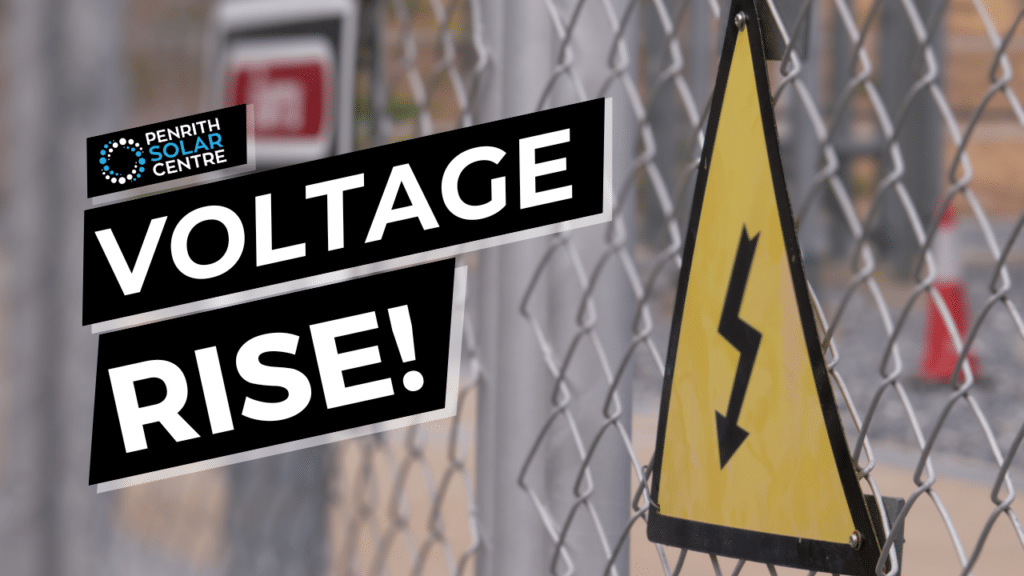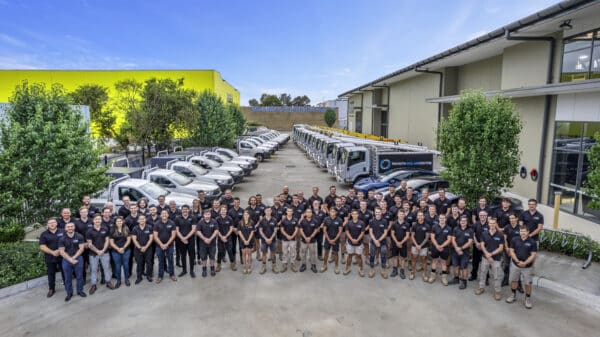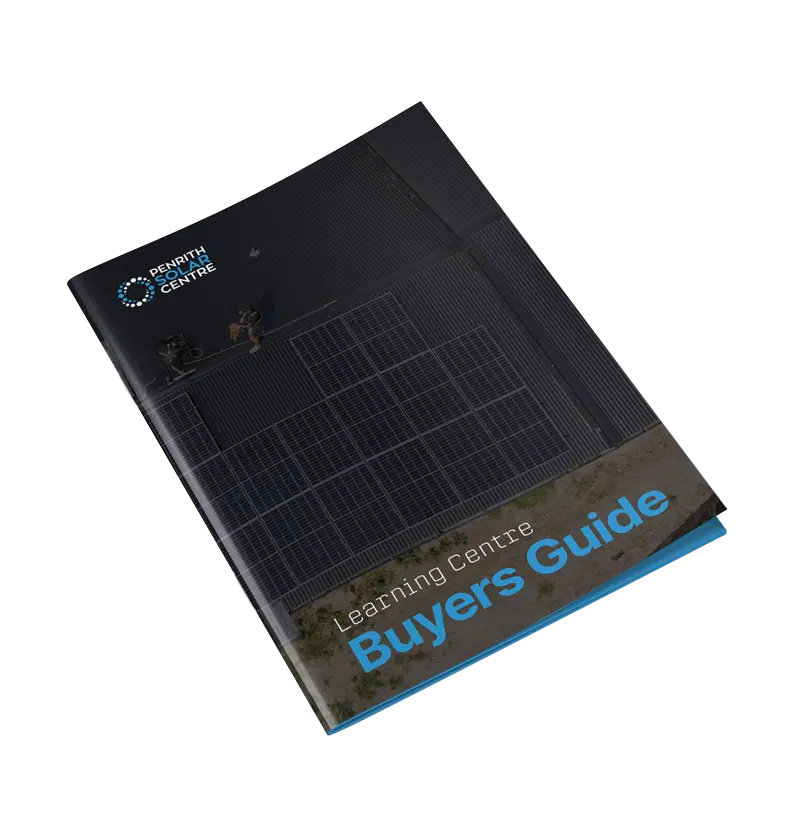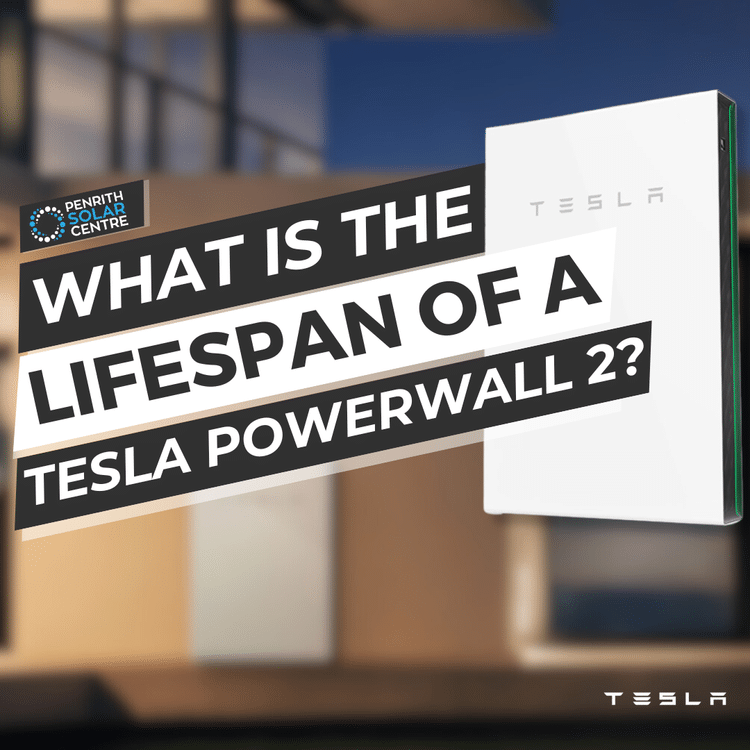
As you’re researching solar solutions, you’ve probably read the phrase “voltage rise.” It’s a simple concept but there are important implications that will ultimately affect your solar system installation. But what is it?
Well, the short answer is the difference in electrical voltage between your home and the grid as determined by the resistance in the wiring (and a few other factors).
Oh, dear. Science and math.
At Penrith Solar Centre, we don’t shy away from science or math when it comes to installing your solar system. Our years of experience in accounting for voltage rise with every installation is part of what makes us Western Sydney’s premiere solar company. As a company built by electricians, we want you to understand every facet of your solar journey – as much as (or as closely as) we do.
In this article, you will learn:
- What is Voltage Rise?
- Voltage Rise and Ohm’s Law
- Why Do We Calculate Ohm’s Law
- Working with Voltage Rise at Penrith Solar Centre
- What the Heck is Voltage Drop?
By the end of this article, you’ll understand everything that we consider regarding voltage rise when we’re installing your solar system.
What is Voltage Rise?
Voltage rise is the difference between the voltage the grid is sending to your home and the output of voltage that the solar inverter is exporting to the grid.
For example, let’s say we have two voltages: the grid (230V) and your solar inverter (235V). The difference in voltage between the grid and your solar inverter results in a 5V. That number is achieved by some simple subtraction: 235V minus 230V is 5V.
The voltage rise here is 5 volts. The difference here is 5 volts.

Why does it matter if the voltage from the home is higher than the grid? That’s a great question.
To export solar energy from your home to the grid, a slight rise in voltage is necessary. This “pushes” the energy from your home to the grid.
Voltage Rise and Ohm’s Law
The transformer on your street feeds your house with electricity. In overhead wiring setups, transformers are mounted on poles, appearing as big grey boxes. In an underground wiring setup, a big green box on the street corner is a ground-mount (or pad-mount) sub-transformer.
The distance between your home and the transformer will affect the voltage exchange between the home and the grid. This is because there is more wiring that the electricity has to flow through to get to your home. There is resistance in that wiring that is slowing the flow of electricity.
In these articles, we like to use water and plumbing as metaphors for how electricity behaves because it’s an easy way to explain a complex concept. Electricity follows the path of least resistance (like water does) and that implies one direction. And it does go in one direction to follow the path of least resistance (until it reverses and flows in another direction, but then we’d have to get super technical because the explanation for that requires so much more science and math).

A narrower hose will have more resistance than a wider hose. This increases the “pressure” in the hose.
In other words: a thinner wire will have more resistance than a wider wire. The size of the conductor (wire) influences voltage rise due to its natural resistance.
Controlling resistance in wires involves adjusting thickness, material, or length. Thicker wires have less resistance because their diameter is wider. Different materials have varying resistances; gold and aluminium will conduct electricity differently. And, of course, the length of the wire is a huge factor. If the home is closer to the transformer, the route to travel is shorter, which equals shorter wires, so the resistance is less here as well.
Choosing the right wires involves balancing cost, workability, and system requirements. A knowledgeable installer is crucial for accurate wiring calculations.
As we stated before (but it bears repeating): to export solar energy from your home to the grid, a slight rise in voltage is necessary. This “pushes” the energy from your home to the grid. The higher your wire’s resistance, the higher the voltage must be to force the current to the grid.
If the cables between the inverter and the grid are too small for the size of your solar system, voltage rise can become a problem because there’s too much resistance to push electricity from your home to the grid.
Okay, here’s the graphic that compares the flow of electricity to water again, so you don’t have to scroll up to reference it as you read the next bit:

In basic terms, volts represent the energy push, the muscle. Think of volts as what propels the current forward. It is represented in Ohm’s law as a V.
Current signifies the flow of energy which is measured in Amps. It is represented in Ohm’s law as an I.
The resistance of a conductor (wire) is measured in ohms. It is represented in Ohm’s law as R.
V = Voltage
R = Resistance
I = Current
Ohm’s law is one of three equations. If you have two, you can calculate the third:
V = IR
I = V/R
R = V/I
Why Do We Calculate Ohm’s Law?
Why is it important to calculate Ohm’s law?
Because: your solar inverter needs a higher voltage than the grid to export electricity (but only within 2% of the grid’s voltage).
It’s so incredibly important for your solar installer to do this accurately.
The amount of acceptable variance (the voltage rise) produced by your solar system as regulated by Australian standards is within 2% of the grid voltage, approximately a 4.6V rise.
Australian standards require electricity to be supplied from the grid at 230 V (+10% to -6%), providing an allowable voltage range between 253 V (+10%) to 216 V (-6%).
So, to make sure that the voltage is no more than 4.6V, the resistance – in the wiring – between the grid and your home must be at a maximum of ~0.21Ω (ohms) to meet this limit.
Working with Voltage Rise at Penrith Solar Centre
Local DNSPs, like Endeavour Energy in NSW, follow service and installation rules. These rules dictate how houses connect to the grid. If you’re interested in learning more about DNSPs, you might want to check out the following article titled, Energy Distributors vs. Energy Retailers: What’s the Difference?
For solar design, voltage rise is crucial. The NSW service rules set a 2% total limit and a 1% per leg maximum. “Per leg” refers to different wiring parts in your solar system.
For instance, along one “leg” of wiring, you may have 1% voltage variance in the cable from the roof to the board, and another 1% voltage variance in the wiring from the home to the street. That’s a total of 2% variance in each “leg” of the wiring. Compliance with these rules ensures a well-functioning solar system within grid regulations.
Maintaining a 2% or 1% per leg and 2% overall voltage rise complies with these rules. Your solar installer will make choices regarding wires between the grid and your home based on the percentage of resistance per leg.
In Australia, if your inverter exceeds 253 volts, it must lower its output or shut down at 258 volts – a strict limit. Microinverter solar systems continuously track output voltage to avoid this. Why is it necessary to stay under this hard limit?
With over 30% rooftop solar penetration in Australia, there are times during the day when the voltage surpasses the allowable limit on the grid, set at 230 volts plus 10%, reaching a maximum of 253 volts (remember: 230 volts with variance of +10% and -6%).
At midday, when all the solar systems are producing the most power, the amount of output to the grid can potentially exceed 250 volts (sometimes higher, resulting in a shutdown). Later in the day when the sun is low and solar systems produce less power and homes are using more electricity from the grid, you might see voltages closer to 230.
The flow of electricity is all connected as a giant alternating current circuit. The variances between the grid and your home need to be within a certain amount for electricity to function.
In summer, systems without export limits may sell excess energy to the grid when homeowners are away. Battery storage alleviates voltage rise and grid stability issues, as excess energy can be stored instead of sold.
Changing export settings to exceed voltage rise limits will be noticed by your DNSP. They measure incoming and outgoing voltage, which vary within their service areas depending on solar presence and home loads (when we say “loads” we’re referring the amount of electricity that appliances are using in the home – it’s a fun industry term you can use to impress your friends).
If your installer doesn’t account for voltage rise with your solar system, your system will be greatly inhibited in how much energy it can export back to the grid.
What the Heck is Voltage Drop?
You might have heard this term grouped with voltage rise in your research.
It is voltage rise in reverse. It is literally the same thing, but backwards.
If you need to produce 4.6 volts more than the grid to push that sweet, sweet electricity to the grid from the home, how does electricity get from the grid to your home?
Electricity follows the path of least resistance. If your solar system is producing less than 230 volts, as it would in the evening, then the power can flow from the grid to your home. You will be importing electricity instead of pushing it out to the street because the voltage from the street is higher than the voltage from your home.
What causes it to switch back and forth?
Well, remember this passage from earlier in the article: “Electricity does go in one direction to follow the path of least resistance (until it reverses and flows in another direction, but then we’d have to get super technical because the explanation for that requires so much more science and math).”
It’s super technical, so don’t worry about it. That’s why you hire an installer you trust. If you’re interested in learning a bit about what type of installer you might be interested in, you might want to check out the following article titled, In-house Installers vs. Subcontractors: Which is Better?
Voltage Rise: Now You’re Catching Ohm!
Now that you’ve read about voltage rise, you are empowered to ask your solar installer about how this consideration affects your installation. By understanding the variance of electrical voltage between your home and the grid, you’ll be able to output electricity from your solar system (and make certain it outputs to the grid for a feed-in tariff when appropriate).
At Penrith Solar Centre, we work with you to determine your exact electrical needs. What you import from the grid and what you export to the grid will vary from customer to customer. We’re here to talk you through the entire process so you fully understand each aspect of solar installation.

If you’re interested in learning more about how the grid and your solar system work together, particularly when it comes to sizing your solar system, you might want to check out the following article titled, How Much Solar Do You Need?










